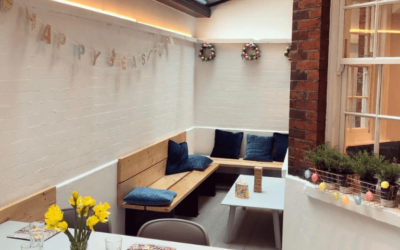Your heart is beating fast. Your body temperature has risen. An overwhelming fear consumes you… Panic attacks are very frightening and stressful experiences. The power they have can make you feel hopeless and scared, but it’s possible to take back control. Here, we share 3 gentle ways to ground yourself to slow you down after a panic attack.
Anxiety is something we can all experience from time-to time. There are lots of reasons why we get this feeling – it can be perpetuated by our jobs, studies, university, relationships with friends and loved ones, eating disorders and how we feel about ourselves. Sometimes, anxiety can go into overdrive, so much so, that the feeling can bring on panic attacks.
What happens in moments of panic?
Cue, the role of the amygdalae. Our amygdalae is located in the base of our brain, which is in charge of regulating emotions, storing memories, and attaching memories to specific emotions. The amygdalae is also what activates our fight-or-flight response, to stressful or threatening situations.
Located in the two large areas at the front of the brain are our frontal lobes. These are responsible for how the brain regulates voluntary actions: such as thinking, reasoning, movement, planning, and decision-making. It is more rational than the amygdala, meaning the front lobes allow assessment of the “danger” to then decide on a response.
In the event of a threat, the amygdalae jumps to the fight-or-flight response, meaning that our body starts preparing to move and activate in order to ensure our survival.
But a way to slow down the amygdalae’s response is to activate the frontal lobes by focusing on things and your surroundings that are present – essentially, to ground yourself in the “here and now”.
This is why breathing techniques (such as box breathing) and mindfulness can be powerful interventions for panic attacks, as they allow you to slow down and to take stock of how you are feeling, in both mind and body.
Your breath is the one element of your autonomic nervous system that you can control. This is immensely powerful as it means that we can breathe our way out of feeling threat. For instance, by exhaling longer than our inhale, we trigger our brains to regulate back into safety.
Research also tells us that hyperventilation (which often happens during or before panic attacks) leads to low levels of carbon dioxide in your blood, which causes many of the uncomfortable and scary symptoms of panic attacks. So, to reduce symptoms, you need to increase carbon dioxide by slowing your breath or breathing in a way that limits oxygen intake (such as holding one nostril down whilst breathing in and out)
To aid your recovery from experiencing a panic attack, we share 3 gentle tips:
1) Breathe
Find a quiet and comfortable space with us and take a moment to breathe. If possible, you can close your eyes or lower your gaze.
Breathe in.
Breathe out.
Breathe in.
Breathe out.
Feel your body soften and start to relax. Allow your thoughts to come and go, and return to your breath. Continue taking deep breaths.
2) Focus
Focus on how your body it is starting to feel.
Are you feeling more relaxed? What bodily sensations are present? Is there somewhere in your body that needs more attention?
Take note of what arises and draw compassionate focus to it. You are safe, your body is safe, and you are in control.
3) Touch
In your own time, place your hand over your heart. Let’s build upon that mind-body connection, with gentle touch.
Stay attuned with the rise and fall of your body. Observe how this feels.
When you feel ready, slowly open your eyes. Collect your thoughts.
Well done, you did it. You are still here and we proud of you.










